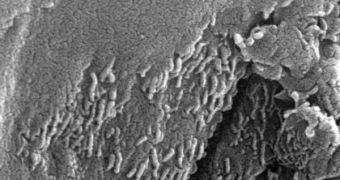In spite of the fact that most of the space probes, landers, orbiters and rovers we send out into the solar system pass through extensive cleaning stages, there is always the risk of them carrying some organisms from the Earth on another celestial body. Experts warn that this is to be avoided at all costs, most importantly because it would taint our results of searching for life on other planets later on. Bacteria traveling with a Mars lander, for instance, could theoretically survive in the soil, despite adversities, and could yield false positive results for a future exploration mission, Space reports.
“If terrestrial bugs make it to Mars can they survive and grow, or would they be able to thrive in extreme environments? So far, our results show that they wouldn't be able to grow,” University of Florida, Department of Microbiology and Cell Science Professor Wayne Nicholson asks. He is the lead author of a new paper assessing the current planetary-protection policies and procedures employed by NASA. The work appears in the September issue of the respected scientific journal Trends in Microbiology.
This line of investigation is especially important in light of the fact that NASA is planning a Mars Sample Return mission for the near future, which would see a robot departing the Earth, landing on the surface of Mars, collecting and storing soil samples, and then returning back to our planet. The risk of cross-contamination is especially great in such a mission, experts warn, therefore every possible precaution needs to be taken. “The highest priority is to prevent contamination of the Earth. We have never brought samples back from places where we think (life could exist). So from a practical point, we are concerned with forward contamination,” NASA's planetary protection officer, Catharine Conley, says.
“The greatest dangers are back contamination even though the probability might be lower. The fact is that we're living on the Earth and determining our livelihoods, and we're part of the ecological (system), which could potentially be affected by back contamination,” University of Colorado in Boulder (UCB) Professor of Astrophysical and Planetary Sciences Larry Esposito adds. He shares that, although backward contamination is the worst kind, forward contamination (from our planet to another) is also undesirable. “When searching for life, we don't want to have a false positive. That would confuse identification of life on another planet or location,” Esposito concludes.

 14 DAY TRIAL //
14 DAY TRIAL //